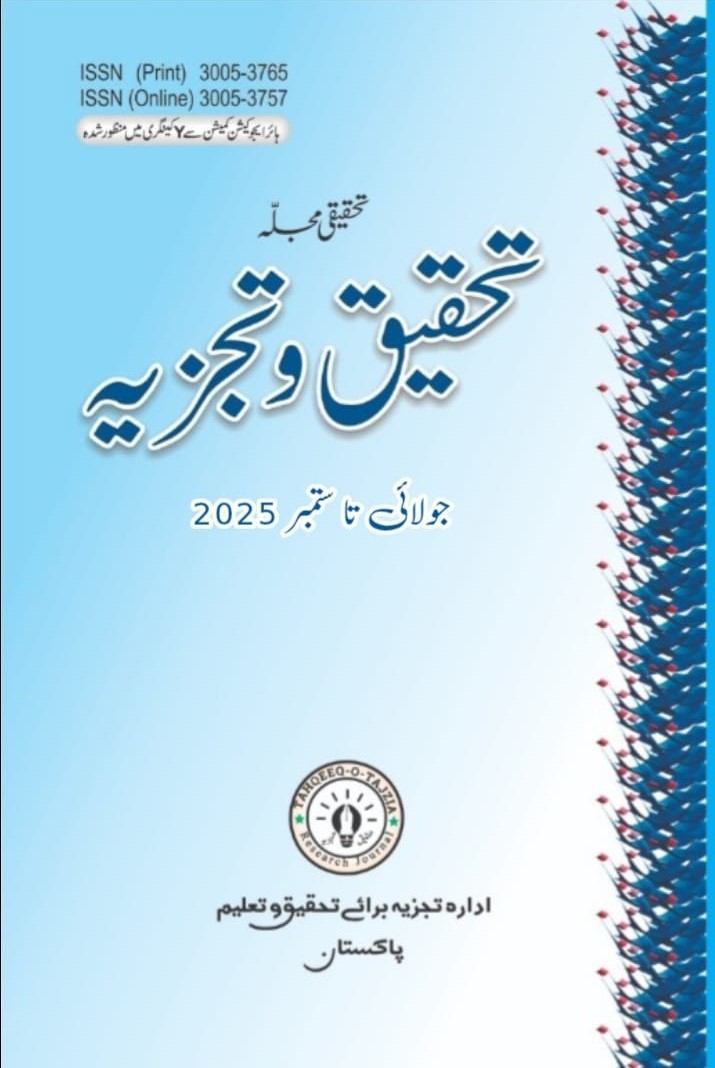Variable Aspects of Urdu Nazm
Keywords:
modern Urdu poetry, intellectual diversity, psychological, linguistic, civilizational, cultural dimensionsAbstract
Every individual possesses an inner rhythm, and it is this rhythm that shapes the structure of their life in accordance with their temperament and character. If this rhythm disappears from life, the balance of human existence begins to falter. The same can be said about poetry—it is both prose and verse. Advocates of free verse have linked it to an organic rhythm, asserting that rhythm has an organic concept. In the twenty-first century, poetry has emerged not only as an autonomous and independent genre, but its caravan is advancing more rapidly than that of the ghazal. Many distinguished names have joined its constellation, and even poets known for ghazals are increasingly drawn toward poetry. With all its nuances, poetry has begun to unlock the doors of enchantment۔
References:
- Wazir Agha, Nazm-e-Jadeed ki Karwatein, Educational Publishing House, Nai Dehli, 2000, p. 11.
- Anwar Sadeed, Jadeed Nazm ke Arbab-e-Arba‘a, p. 58.
- M. Rashid, Mavra, Lahore: Maktaba-e-Urdu, 1941, p. 108.
- Khawaja Zakariya, Kulliyat-e-Majeed Amjad, Lahore: Mavra Publishers, s.n., p. 115.
- Nasreen Raees Khan, Josh ki Paikar Tarashi (Tanqeedi Jaiza), Shine Prints and Binder, Dehli, 2001, p. 18.
Downloads





